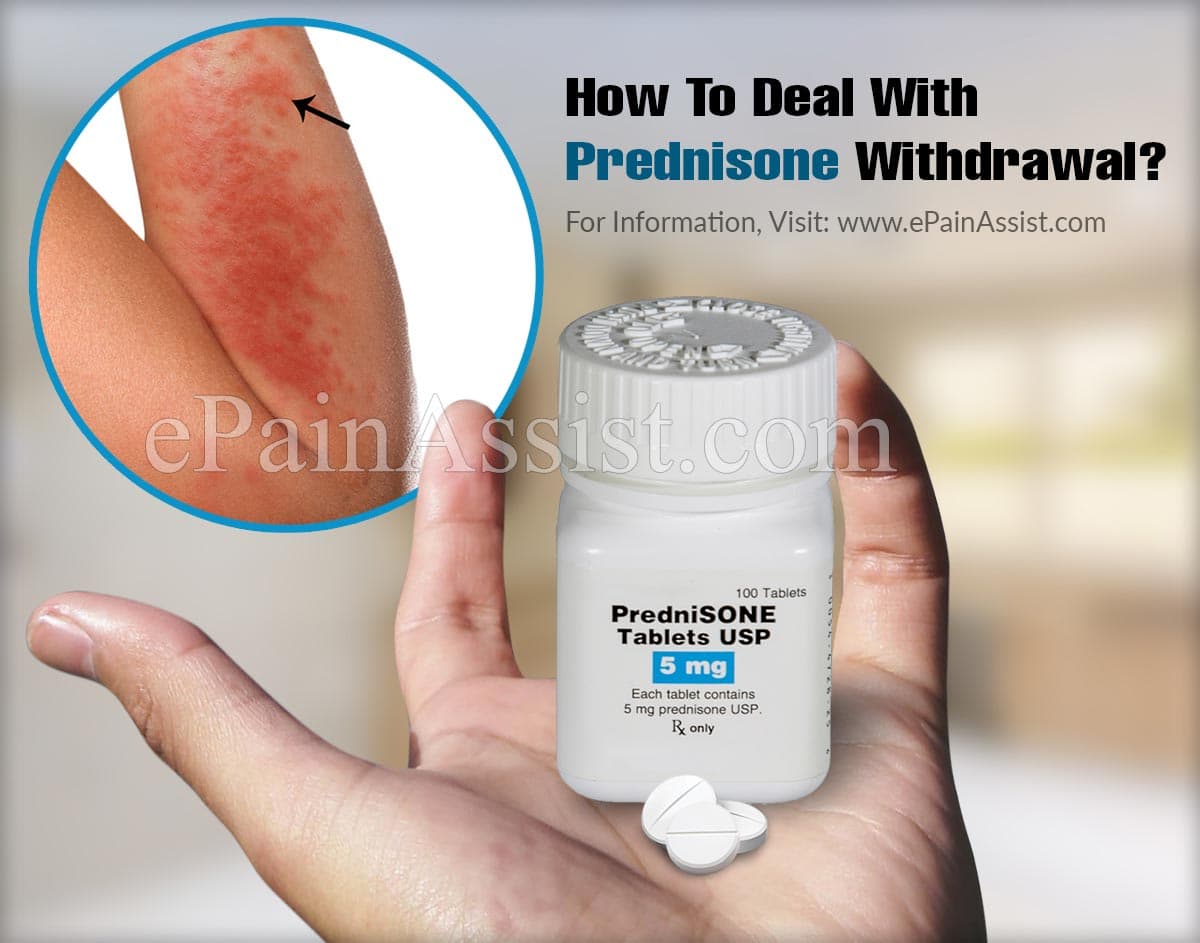About Prednisone Withdrawal:
Steroids are most commonly prescribed in tapering disease for treatment of chronic pain. People with severe pain of the joints and who have other severe arthritic conditions often find relief with steroids. Steroids are also prescribed for treating other conditions like asthma, allergies, lupus, skin disorders, or bowel problems. Prednisone is one such steroid which is commonly prescribed for pain relief. It is mandatory for all physicians to give steroids only for a short period of time because of its addiction potential and other side effects[1].
However, due to the pain relief that people get they often stick to such steroids by sometimes even using unfair means. This leads to a stage that when they do not get prednisone or any other steroid they start experiencing certain symptoms. This is what is called as withdrawal symptoms. When it happens due to prednisone then it is termed as Prednisone Withdrawal[1].
In many cases, prednisone withdrawal is underdiagnosed leading to significant patient morbidity due to lack of proper treatment. This is because the symptoms caused by withdrawal symptoms are not well recognized. This article highlights some of the symptoms of prednisone withdrawal and ways to deal with withdrawal symptoms[1].

How To Deal With Prednisone Withdrawal?
Prednisone is a steroid medication which works similar to cortisol which is a hormone produced by the adrenal glands. Cortisol is actually a stress hormone which is released when an individual is under stress. However, cortisol has other functions as well like regulating blood pressure and pulse rate. Under normal circumstances, the body produces enough cortisol to carry out all the functions[2].
When an individual is on prednisone, the body automatically starts producing less of cortisol especially when this medication is taken for a prolonged period of time. Then when the patient stops taking the medication, the body is unable to immediately start producing the amount of cortisol to fill the void that has been left by the medication[2].
It may take anywhere from a couple of days to a few weeks before normal production of cortisol begins. This period where the body does not have enough cortisol resulting in certain symptoms is what that causes prednisone withdrawal. Apart from blood pressure regulation, cortisol also is involved in various other functions of the body to include blood sugar control, metabolic activity, memory, and immune system regulation[2].
An individual with prednisone withdrawal will experience irritability, body pains, severe lethargy, and dizziness. The individual will also complain of loss of appetite, joint pains, and nausea. The severity of the symptoms may vary depending on the time the individual has been on prednisone and the dosage and may continue up to a few months after stopping the medication[2].
The treatment of prednisone withdrawal aims at controlling the symptoms and restoring the normal production of cortisol in the body. There are certain lifestyle modifications that may be suggested by the physician to control the symptoms of prednisone withdrawal. These lifestyle modifications include adequate sleep, coping with stress, alcohol and caffeine abstinence, eating a balanced diet[2].
However, these changes may not be enough to control the whole gamut of symptoms of prednisone withdrawal. The patient needs to consult with a physician to find the best possible way to treat the symptoms of prednisone withdrawal[2].
In conclusion, prednisone withdrawal occurs when an individual who has been on prednisone for a prolonged period of time stops taking the medication abruptly.
Prednisone is a steroid medication prescribed for pain relief in weaning doses due to its addiction potential[2].
The symptoms of prednisone withdrawal range from joint pains to dizziness and mood swings. There are lifestyle measures which an individual can adopt to control the symptoms but a consultation with a physician is vital to get complete relief from the symptoms of Prednisone Withdrawal[2].
